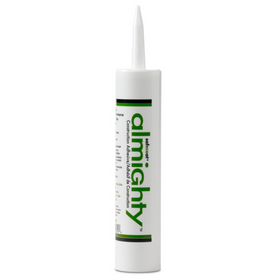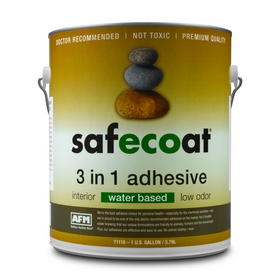
Prefabs We Love for 2021
Last Updated: Feb 11, 2025In the last decade, "prefab" has come to mean something quite different from the "manufactured" (otherwise known as trailer or mobile) homes of the past. Innovative architects and builders, even "starchitects," are now designing homes that can be prefabricated. These modular components can be built off-site in quality-controlled factories, then transported and constructed to the worksite in a matter of days.
Now, designers are also innovating prefab homes that are LEED, Passive House, or Net-Zero ready. Dodge Data & Analytics recently released a report entitled the Prefabrication and Modular Construction 2020 SmartMarket Report. It compiles information and insights from designers and architects, engineers and contractors already working within the prefab industry.
Table of Contents
- Plant Prefab
- Deltec
- Phoenix Haus
- Bamboo Living
- FabCab
- EcoCraft
- Dvele
- Module
- Shelter Dynamics
- Urbaneer
- Pacific Homes
- Linwood Homes
- Bert & May
- Honomobo
- Kodasema
- Bensonwood
- Ecocor
- Thoma Holz100
- Brightbuilt Home
- GO Logic
- Haus.me
- Method Homes
- BONE Structure

The report's authors write that prefab and modular construction are on the rise as the "industry seeks to improve safety, productivity, quality, cost, schedule, and sustainability performance." In particular, they add, "Construction sites are greener due to less waste being generated, and safer due to working with assemblies and modules produced off-site."
We agree and are equally enthused about prefab's potential. So much so that we'd like to share with you our favorite prefab manufacturers and models and why we're fans. Let's get started.

Plant Prefab
The company, based in Rialto, CA, is the first custom modular and panelized home builder dedicated to sustainable building, materials, processes, and operations to achieve B Corporation certification. "As a socially responsible business, we've always been committed to wedding purpose and profit in our work," said Steve Glenn, founder, and CEO, in a press release.
They went on to say that they used the US Green Building Council's (USGBCs) LEED program for many years to secure third-party verification of their sustainability and performance. They consider B Lab to be an equivalent authority to measure the company's impact. They have an extremely comprehensive process and require that companies undergo verification every three years to maintain compliance.

Moreover, Plant Prefab believes "everyone deserves to live in a well-designed, beautiful, functional, and healthy home. We believe that you should never have to sacrifice form for function, aesthetics for efficiency, or style for sustainability." In partnership with architects, including Douglas W. Burdge, Brooks + Scarpa, Ray Kappe, and Geoffrey Warner at Alchemy Architects, Plant Prefab manufactures an array of modern sustainable prefabs, including Alchemy's lightHouse ADU (accessory dwelling unit).
In February 2020, the company debuted its own ADU, LivingHome 10, during Modernism Week in Palm Springs, CA., designed and built according to Plant Prefab's Z6 environmental health and sustainability framework. The company also offers larger homes through its LivingHome series, such as this one in rural Sonoma County. The home includes many sustainable features including:
- High-performance heating and cooling systems
- Energy Star appliances
- Smart energy monitoring
- LED lighting
- Recycled high-performance insulation
- Drywall with a high recycled content that's also mold-resistant and non-combustible
- Low-flow water fixtures
- Solar-ready or net-zero design

Deltec
Well-known for its round-house prefabs, Deltec works with clients to achieve the level of sustainability they're seeking. Whether homeowners are simply seeking energy efficiency or aspiring to net-zero, the company designs homes that seamlessly connect the indoors and outdoor landscape. The prefabs are fabricated in a factory powered by 100% renewable energy. Based in Asheville, NC, the company also has a recycle and reuse program that diverts more than 80% of waste away from landfills.

Bamboo Living
Based in Pahoa, HI, this fascinating prefab company creates the "only internationally certified, permit-ready bamboo homes and buildings in the world," according to Bamboo Living's website. Durable, low-maintenance, pest- and insect-resistant, and able to withstand hurricanes with winds more than 200 mph, these prefabs are built for resilience.

Take a look at the HOMB Series, for instance, based on 100-square-foot triangular modules. The Simpatico series (a zero-energy home that includes the solar voltaic system in the base costs), Annata series (single-level, to bring the outdoors in), and Elemental series all feature a modern sensibility. All can be built to obtain LEED, ENERGY STAR, Living Building Challenge, or Passive House certification.

BONE Structure
The company, which has offices in Canada and the US, builds its models using a patented steel structure and high-performance rigid and foam insulation (walls at R-28.5, ceilings at R-30 or higher) for net-zero ready homes. By significantly reducing the home's energy requirements, the BONE Structure construction system allows homeowners to reach net-zero easily.

High-performance floor-to-ceiling windows and doors complete the thermal envelope. The minimalist, inviting models in the OS Collection have open plan living inspired by the Scandinavian concept of Hygge.
Camille LeFevre
Camille LeFevre is an architecture and design writer based in the Twin Cities.



































